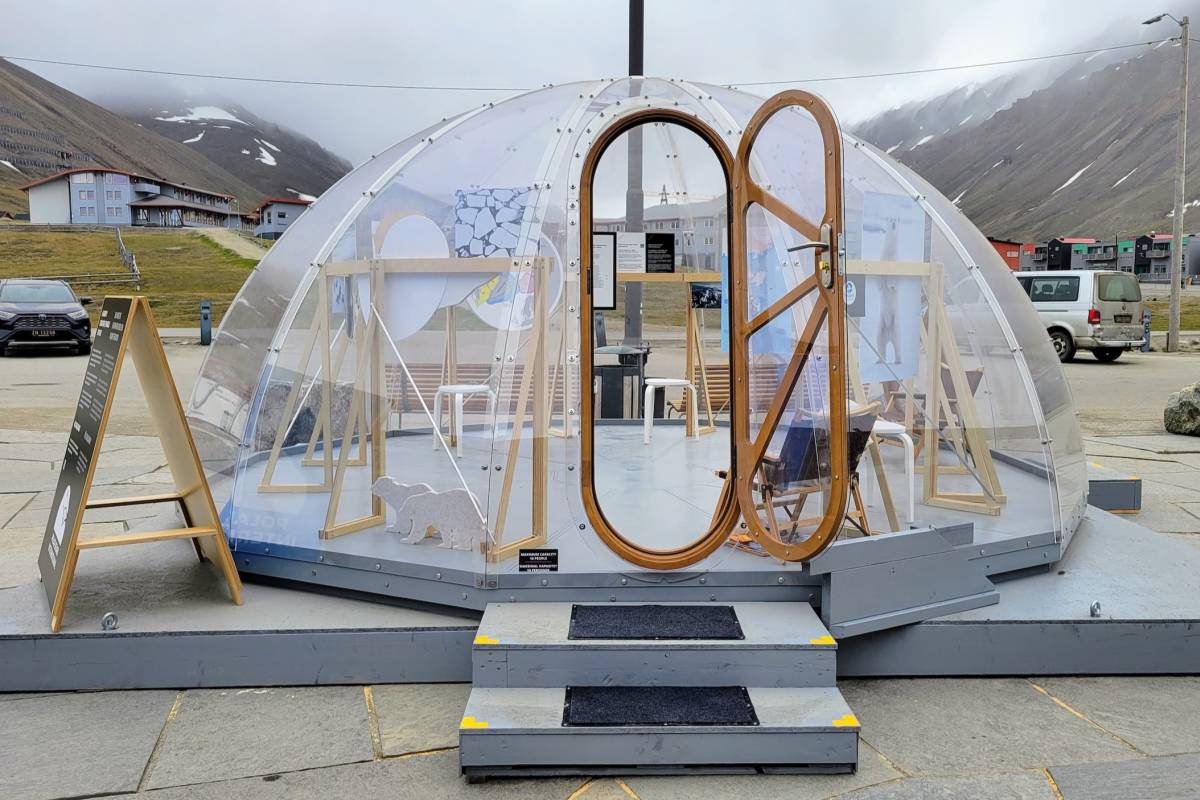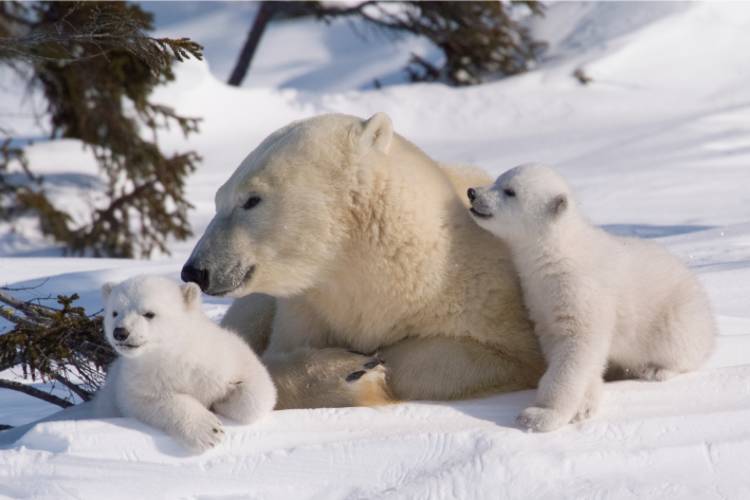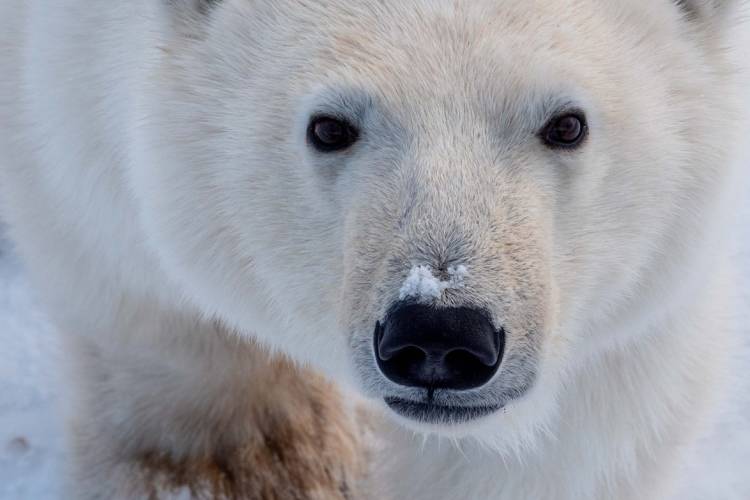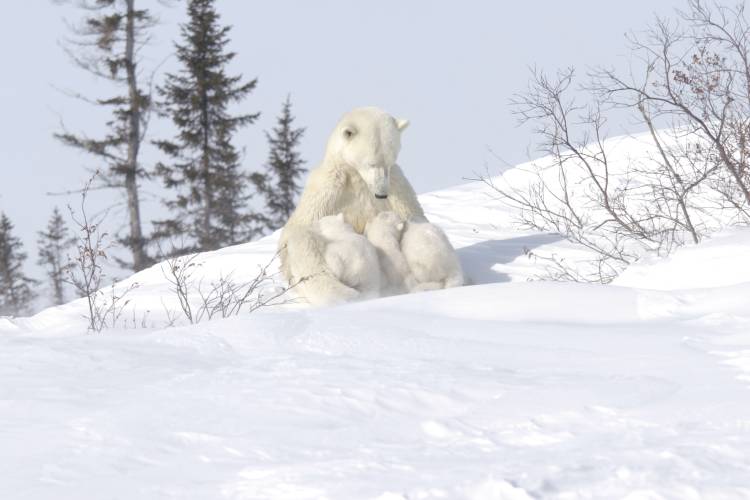The Ice House represents an expansion of Polar Bears International’s efforts in Svalbard, which includes ongoing maternal den studies in partnership with the Norwegian Polar Institute and the San Diego Zoo Wildlife Alliance. The research uses remote, solar-powered cameras to noninvasively study key aspects of denning behavior for polar bears, answering questions about the timing of den emergence, the condition of moms and cubs, and their sensitivities to human disturbances. In addition, in more recent years, scientists at PBI, Brigham Young University, Simon Fraser University, and NORCE have been testing promising new den-detection technology in Svalbard’s snowy mountains. This could greatly improve our ability to locate maternal den sites under the snow, helping to protect vulnerable denning areas. Svalbard is an important denning region for females, but accessing dens is becoming more difficult due to sea ice loss.
The Polar Bears International Ice House is inspired by the success of the Polar Bears International House in Churchill, Canada which provides conservation education to visitors. Since opening in 2019, the Churchill House has welcomed thousands of visitors and also acts as a community building, hosting local workshops, meetings, and events. The architectural firm Lupien + Matteau designed the exhibits for both spaces.
The Polar Bears InternationaI Ice House was made possible by generous support from performance luxury brand, Canada Goose. Partners include the Svalbard Museum, Hearts in the Ice and the Norwegian Polar Institute. Special thanks also to the University Centre in Svalbard and Bring Transport.
About Polar Bears International
Polar Bears International’s mission is to conserve polar bears and the sea ice they depend on. We also work to inspire people to care about the Arctic, the threats to its future, and the connection between this remote region and our global climate. Polar Bears International is the only nonprofit organization dedicated solely to wild polar bears and Arctic sea ice, and its staff includes scientists who study wild polar bears. The organization is a recognized leader in polar bear conservation. For more information, visit www.polarbearsinternational.org.
Media Contacts
Annie Edwards, for Polar Bears International
annie@fabricmedia.net
T: +44 07307 139782
Melissa Hourigan, for Polar Bears International
melissa@fabricmedia.net
T: +1 720-608-1919


















